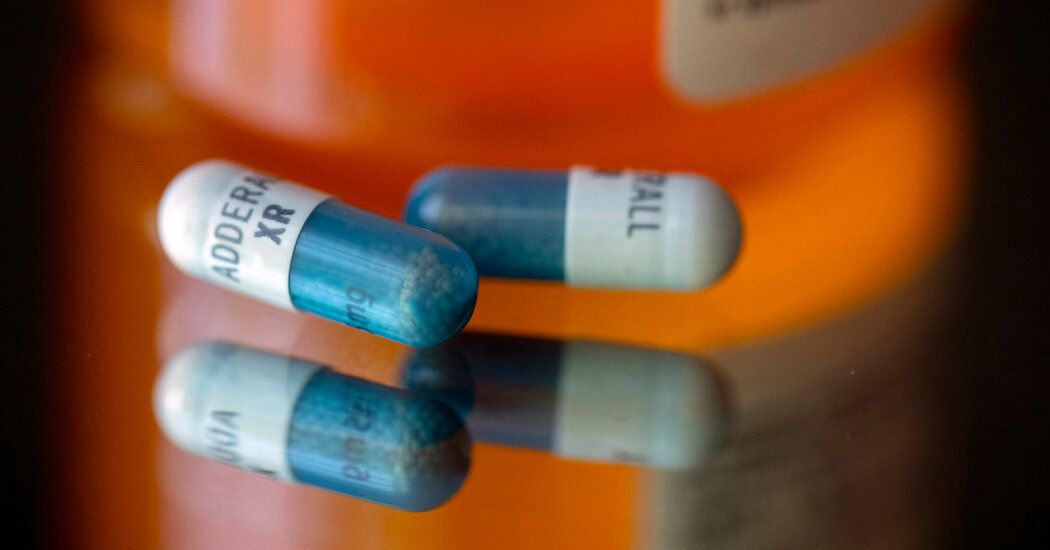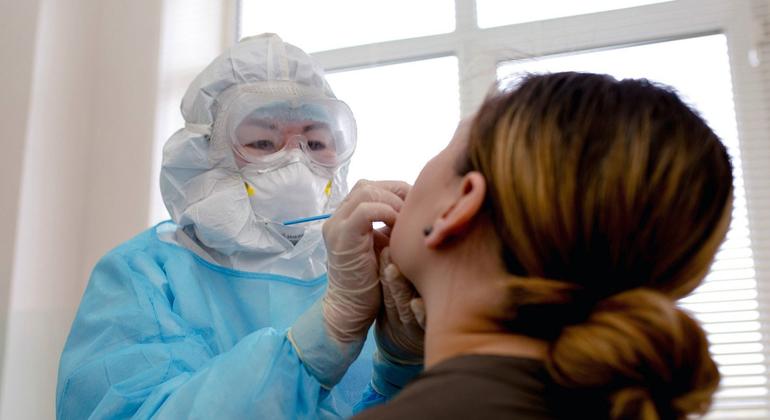News
Prescriptions for medications used to treat attention-deficit/hyperactivity disorder increased during the coronavirus pandemic, particularly among women and patients ages 20 to 39, according to new research compiled by academics affiliated with the U.S. Food and Drug Administration. USA
The increase came as prescription rates remained relatively stable for other key classes of behavioral health medications used to treat conditions such as depression and anxiety, according to the study, which was published Wednesday in JAMA Psychiatry.
The researchers found that the reasons are not entirely clear and could include pandemic-related stress, recognition of undiagnosed cases, overprescribing and online drug marketing.
Lisa Cosgrove, a clinical psychologist at the University of Massachusetts in Boston, who was not involved in the study, said the results “seem contradictory,” since the pandemic was a time when most people were not in school or in offices, environments where attention-related issues often come to light.
The study authors noted that social media may have played a role in the increase in ADHD prescriptions, as telemedicine services “used social media services to advertise treatments for behavioral health conditions, such as ADHD and eating disorders.
Dr. Cosgrove, who studies psychiatric treatment practices, agreed. She hypothesized that online influencers and others speaking openly on platforms like TikTok about their own ADHD diagnoses might have prompted viewers to explore and “self-diagnose.”
“There are so many videos on TikTok about people being diagnosed with ADHD and adopting the ADHD identity,” Dr. Cosgrove said.
Stephen Hinshaw, a psychology professor at the University of California, Berkeley, and an ADHD expert, said the “TikTok phenomenon” and other social media platforms almost certainly led to overprescribing of medications due in part to the “rapid and quick response”. “dirty” is self-diagnosed through online questionnaires, along with easier access to online stimulant prescriptions.
But one benefit, he said, is that social media may have allowed many people to recognize that they had untreated ADHD. This may be particularly true for women, she added, as they come to understand that ADHD is not just a “children's disease,” as it has long been characterized.
The numbers
The study, conducted by scientists at the Center for Drug Evaluation and Research, a division of the U.S. Food and Drug Administration, compared pre-pandemic drug prescriptions in five classes with prescriptions during the pandemic, which the study defined as a two-year period from April 2020 to March 2022. Compared to the previous two years, during the pandemic period there was a decrease in prescriptions for two classes of medications: benzodiazepines, which are used to treat anxiety and other conditions, and buprenorphine, which is used to treat opioid use disorder. . Benzodiazepine prescriptions decreased by 9 percent and buprenorphine prescriptions decreased by 2 percent.
Antidepressant prescriptions increased 10 percent during that period. But the study authors note that the increases were consistent with similar patterns before the pandemic, so “changes in levels and trends were not significant for antidepressants.”
By contrast, ADHD medication prescription rates “increased significantly during the Covid-19 pandemic, exceeding pre-pandemic rates, especially in young adults and women,” the study found.
Among people ages 20 to 39, prescriptions for Schedule II stimulants for ADHD, which include Ritalin and Adderall, increased 30 percent. Schedule II drugs have “a high potential for abuse that can lead to serious psychological or physical dependence,” according to the federal government. Prescriptions for non-stimulant ADHD medications increased by 81 percent among people ages 20 to 39 and 59 percent among women overall, the study found.
The study also revealed a change in drug prescribers. During the pandemic, prescriptions of ADHD stimulants by nurse practitioners increased by 57 percent compared to prescriptions by that group two years earlier, while prescriptions by psychiatrists decreased by 1 percent.
A similar pattern emerged with non-stimulant ADHD medications. Prescriptions by nurse practitioners increased 74 percent during the pandemic, compared to a 12 percent increase for psychiatrists.
Behind the numbers
The researchers wrote that the results raised several questions: In particular, to what extent were ADHD medications prescribed appropriately?
The sharp increase in prescriptions during the pandemic highlighted the continued need to “define treatment appropriateness” as well as explore “how marketing and prescribing practices evolved,” the authors concluded.
Some evidence suggests that ADHD was being overdiagnosed even before the pandemic. Dr. Cosgrove also noted that mental and behavioral health information shared on TikTok and other platforms was often misleading, and said more rigorous diagnosis was needed.












